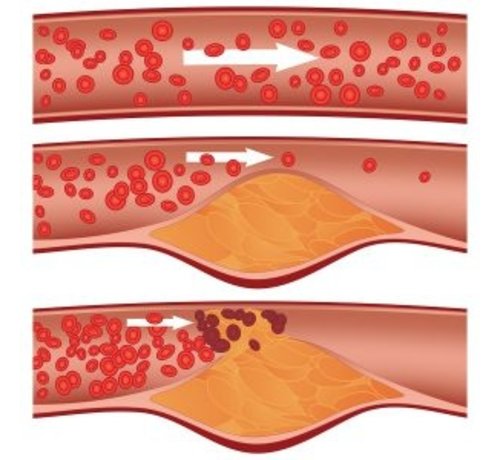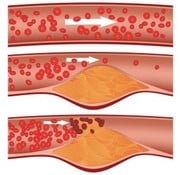Fat Profile Plus: Total Cholesterol, HDL, LDL, Triglycerides and VLDL
Cholesterol fat profile
- total cholesterol
- LDL
- HDL
- Triglycerides
- VLDL (Lipoprotein electrophoresis)
There are 3 types of cholesterol: LDL, HDL, and VLDL. The ratio among them is more important than your total cholesterol levels.
LDL accounts for about 70% of total cholesterol. It is important to lower or control it.
HDL is also called the "good" cholesterol and has the unique ability to absorb excess fat and break it down through the liver.
VLDL is the package in which cholesterol and triglycerides are packed, This is released by the liver.
Triglycerides provide energy, too much of this can increase the risk of cardiovascular disease.
Cholesterol is not necessarily bad. It is produced by the body itself, your diet determines one quarter of the cholesterol. Especially high LDL values are dangerous and can increase the risk of cardiovascular disease.
Arteriosclerosis is caused by a long-term process of oxidation. Damaged vessel walls are susceptible to this. Healthy veins will not suffer from arteriosclerosis. Diet high in antioxidants is very important to counteract this process.
You can lower LDL cholesterol and increase HDL by eating less fat and getting enough unsaturated fats. LDL is stimulated by saturated fats, but so is HDL. With a healthy lifestyle, you can both increase HDL and decrease LDL. Make sure you also get enough omega 3,6 and 9.
Cholesterol plays an important role in the body in building tissues and organs, and in the production of certain hormones and bile acids. A small part of all cholesterol is found in the blood in the form of fat particles, so-called lipoproteins. The desired amount of cholesterol is 5.0 mmol/l or lower. Here the risk of cardiovascular disease is not increased. With a cholesterol between 5 mmol/l and 6.5 mmol/l, the risk of cardiovascular disease is slightly increased. A cholesterol above 6.5 mmol/l increases the risk of cardiovascular disease. On the basis of a lipid profile and other tests, the cause of the high cholesterol can be further investigated.
The following blood values are measured:
LDL cholesterol
Cholesterol is formed in the liver. 70-80% of LDL is absorbed in the liver, adrenal glands and gonads (testes and ovaries). The LDL that remains in the bloodstream is eventually taken up by cells that can cause vascular wall fatigue. LDL cholesterol is also called bad cholesterol because too much LDL increases the risk of heart attack. In most labs, LDL is calculated by Triglycerides and Cholosterol, but in ours, LDL is also measured separately.
HDL Cholesterol
HDL provides transport of "excess" cholesterol from cells back to the liver (reversed cholesterol transport). HDL is formed in the liver, after which it enters the blood circulation and absorbs cholesterol from the cells. Cholesterol is removed from HDL in the liver. In the liver, cholesterol can be removed from the body with the help of bile. HDL is also called good cholesterol because an increased concentration of HDL is associated with a reduction in the incidence of cardiovascular disease. The role of HDL is more complex, it also plays a role in inflammation, infection and more processes.
Cholesterol ratio
In general, one can remember the 3-4-5 rule. The LDL cholesterol lower than 3, the cholesterol ratio lower than 4 (you divide your result total cholesterol by the result HDL) and total cholesterol lower than 5.
Triglycerides
The test measures the amount of triglycerides in blood. Triglycerides form the fat supply in the body and are usually stored in fatty tissue.
Some of the triglycerides circulate in the blood to fuel the muscles. After a meal, blood contains more triglycerides because they are then transported from the intestine (food intake) to the adipose tissue (fat storage). Therefore, the determination of triglycerides should only be performed if a meal has not been consumed shortly before.
VLDL
In this test, VLDL (VLDL = Very low density lipoprotein) from serum is measured. This test is also called the Lipoprotein Electrophoresis.
LDL and VLDL are both "lipoprotein" packages in your blood. Both are considered "bad" types of cholesterol.
LDL cholesterol (low-density lipoprotein) cholesterol contains mostly cholesterol, a little protein and minimal triglycerides in your blood circulation.
VLDL (very low-density lipoprotein) cholesterol contains minimal protein and transports mostly triglycerides.
To prevent VLDL and LDL from clogging your blood vessels, you can follow a cholesterol-requiring diet and consume antioxidant-rich fruits and vegetables.




